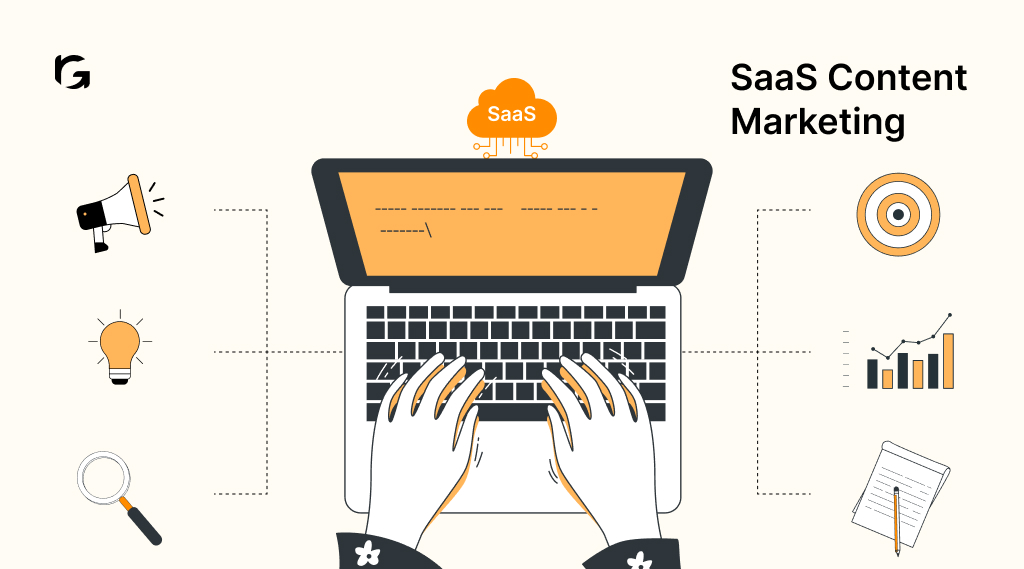Imagine two SaaS companies: one attracts and retains clients effortlessly, while the other struggles to gain visibility. What’s their secret? It often comes down to a powerful strategy: SaaS content marketing. This approach focuses on creating and sharing valuable content to attract, engage, and convert potential leads. The key is crafting messages that resonate with your audience and inspire action. With new solutions emerging daily in the SaaS space, how can you ensure your message stands out?
Let’s explore this and more in this guide!
How are your audience consuming SaaS content?
In the SaaS sector, content consumption occurs through various formats. Key channels include:
- Blogs: Many SaaS companies share industry insights and product updates through blogs, driving organic traffic and establishing authority.
- Social Media: Platforms like LinkedIn, Twitter, and Facebook are popular for sharing content and engaging with followers.
- Email Newsletters: Email remains a powerful tool for delivering valuable content directly to subscribers, including updates and educational resources.
- Webinars and Podcasts: These formats are increasingly popular for in-depth discussions and expert interviews.
- YouTube and Video Content: Videos are effective for tutorials and product demonstrations, making complex information more accessible.
- Industry Forums and Communities: Engaging in discussions on platforms like Reddit or Quora helps reach targeted audiences seeking solutions.
- Ebooks and Whitepapers: Offering downloadable resources provides in-depth insights and serves as a lead generation tool.
Each channel has unique strengths and can effectively reach different audience segments.
Tips for effective content distribution
Distributing your content effectively is essential for reaching and engaging your audience. Here’s how you can do it right:
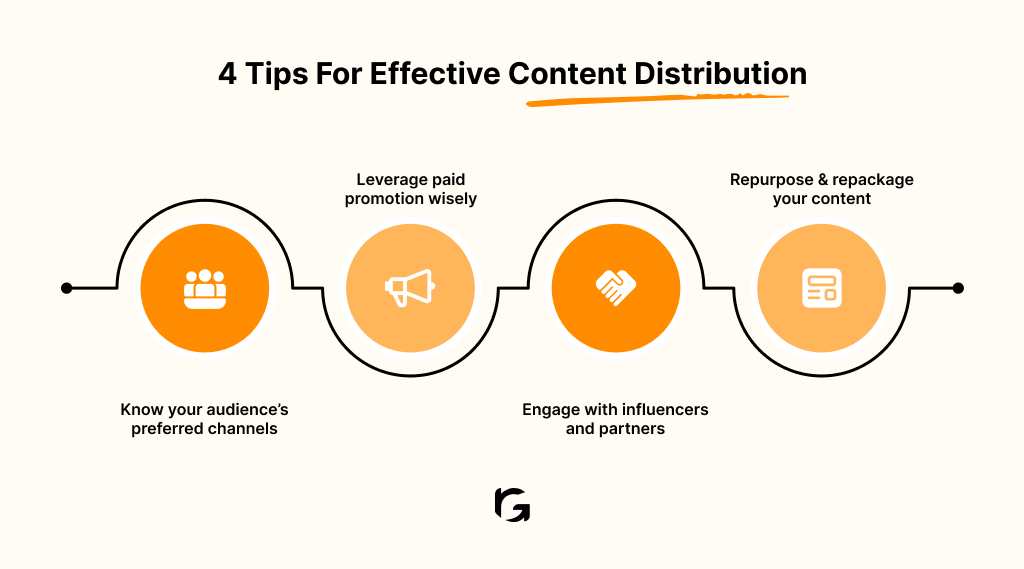
1. Know your audience’s preferred channels
To connect with your audience, you need to know where they hang out. Use analytics to find out if they’re on LinkedIn, Instagram, or industry forums. Tailor your strategy to these platforms.
For example, if LinkedIn is where they are, focus on sharing thought leadership articles and joining relevant groups.
2. Leverage paid promotion wisely
Organic reach is great, but paid promotion can give your content a boost. Platforms like Facebook Ads, LinkedIn Sponsored Content, and Google Ads let you target specific groups.
Define your goals—be it driving traffic or generating leads—and use A/B testing to fine-tune your campaigns. If you’re promoting a new ebook, LinkedIn Ads could be particularly effective in reaching key decision-makers.
3. Engage with influencers and partners
Teaming up with influencers or industry partners can broaden your content’s reach. Find influencers who resonate with your brand and audience. Collaborate on guest posts, webinars, or social media takeovers.
For instance, co-hosting a webinar with a well-known expert can introduce your brand to their followers and provide valuable content.
4. Repurpose and repackage your content
Don’t let your content lose its value after the initial release. Turn blog posts into infographics, create short videos from webinars, or compile articles into an ebook. Sharing these repurposed formats across various channels keeps your content fresh and accessible.
For example, a comprehensive research report can be split into several blog posts, social media updates, and an infographic for wider distribution.
By understanding your audience, using paid promotions, partnering with influencers, and repurposing content, you can effectively distribute your content and ensure it reaches the right people at the right time.
The secret to a successful SaaS content marketing strategy
What makes a great SaaS content marketing strategy? It goes beyond merely publishing blogs or posting on social media. Here’s what sets the best strategies apart:
- Understanding your audience: Effective content begins with a deep understanding of your target audience. Identifying their pain points, goals, and interests allows you to tailor your content for better engagement.
- Offering value: Your content should provide real value—whether solving a problem, offering insights, or sharing best practices. Valuable content encourages repeat visits and deeper engagement.
- Creating compelling stories: People connect with stories, not just data. Crafting your brand’s message into engaging narratives makes your content more relatable and memorable.
- Consistency is key: Regularly publishing high-quality content builds trust and keeps your brand top of mind. Consistency also enhances your SEO and establishes your authority in the industry.
- Leveraging multiple formats: Different formats appeal to different audiences. From blog posts and eBooks to videos and infographics, diversifying your content helps reach a broader audience.
- Optimizing for search and social: Ensure your content is optimized for search engines and social media by using relevant keywords and crafting engaging headlines.
- Measuring and adapting: Track your content’s performance through metrics like engagement and conversions. Use this data to refine your strategy and make informed adjustments.
Ultimately, a successful SaaS content marketing strategy evolves to meet audience needs while aligning with your brand’s goals.
7 B2B SaaS content marketing examples
Looking for some amazing examples to inspire your B2B SaaS content marketing? Here are seven standout examples that demonstrate how to create engaging and effective content:
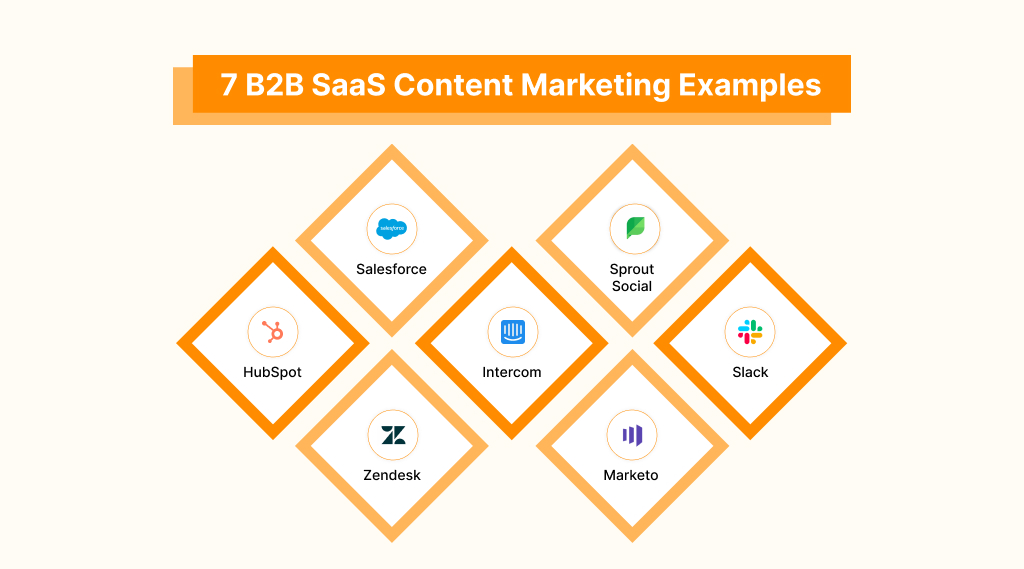
1. HubSpot
HubSpot’s content marketing is legendary. Their blog covers a wide range of topics from inbound marketing to sales strategies, providing actionable insights and tips. They also offer comprehensive resources like ebooks, templates, and webinars.
For example, their “The 2024 State of Marketing & Trends” report combines data with expert analysis, making it a must-read for marketing professionals.
2. Salesforce
Salesforce excels in creating content that educates and engages. Their YouTube channel features product demos, customer success stories, and thought leadership content.
The “Salesforce Live” series offers live streams and on-demand videos on the latest trends and features, keeping their audience informed and connected.
3. Zendesk
Zendesk uses content to build a community and provide value. Their blog includes customer stories, industry insights, and product tips.
They also run a series of “Trending conversations” webinars that address pain points and offer practical solutions, positioning Zendesk as a go-to resource for customer service excellence.
4. Intercom
Intercom’s content marketing is a great example of blending education with actionable content. Their blog covers a variety of topics, from product management to customer engagement.
They also produce an engaging podcast, “Inside Intercom,” where they discuss industry trends and share best practices with experts and thought leaders.
5. Sprout Social
Sprout Social effectively leverages LinkedIn to share content and engage with their audience. Their LinkedIn page is a hub for industry insights, social media tips, and company updates. They frequently post articles, infographics, and case studies that highlight social media best practices and demonstrate the value of their platform.
By engaging with their followers through thought-provoking content and interactive posts, Sprout Social maximises their reach and establishes themselves as a thought leader in the social media management space.
6. Marketo
Marketo’s content marketing includes in-depth whitepapers and ebooks that address key issues in marketing automation and lead generation. Their “Marketing Nation” community offers a wealth of resources, including webinars and case studies, which help users get the most out of their Marketo platform.
7. Slack
Slack’s content marketing strategy revolves around providing value through practical guides, customer success stories, and industry insights. Their blog features posts on productivity, team collaboration, and how to make the most of Slack’s features.
Additionally, their “Slack for Teams” section offers case studies and use cases that demonstrate how different organisations utilise Slack for improved communication and collaboration.
These SaaS content marketing examples showcase how B2B SaaS companies can use a mix of educational content, engaging formats, and community building to drive engagement and establish thought leadership.
The evolution of SaaS content marketing with AI and automation
SaaS content marketing is rapidly evolving, with AI and automation at the forefront. Here’s how these technologies are reshaping the industry:
1. ChatGPT

ChatGPT by OpenAI is more than just a chatbot; it’s like having a brainstorming partner available 24/7. Whether you need a quick draft for a blog post or some creative inspiration, ChatGPT generates human-like text that can kickstart your writing process or even help with customer support.
It’s perfect for brainstorming ideas, drafting content, answering questions, and automating simple customer interactions. For example, if you’re managing a customer service team, ChatGPT can help draft responses that sound friendly and on-brand, freeing up time for your team to focus on complex issues.
Use for: Blog posts, customer support responses, email drafts, idea generation for content strategies, and social media captions.
2. Copy.ai
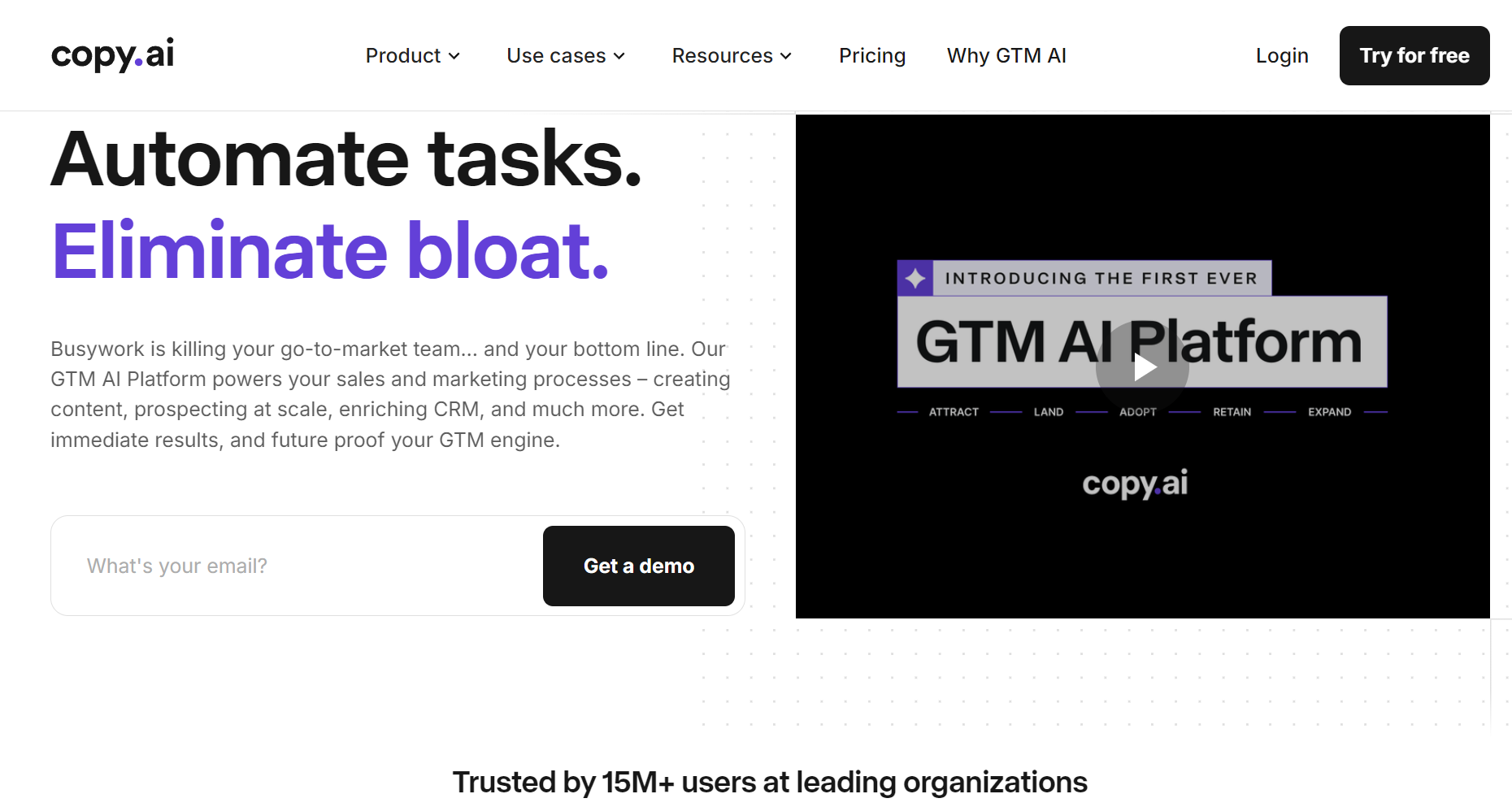
Imagine churning out a catchy tagline or writing a persuasive product description in seconds. That’s what Copy.ai does. It helps you craft engaging copy for just about anything—ads, emails, blogs, you name it. Understanding tone, context, and style, Copy.ai makes it a breeze to create compelling content that resonates with your audience.
And if you’re looking to maintain a specific tone across multiple campaigns, Copy.ai can adapt, allowing you to maintain a consistent voice whether you’re drafting a formal press release or a playful social media post.
Use for: Ad copy, product descriptions, email newsletters, social media posts, taglines and slogans
3. InVideo
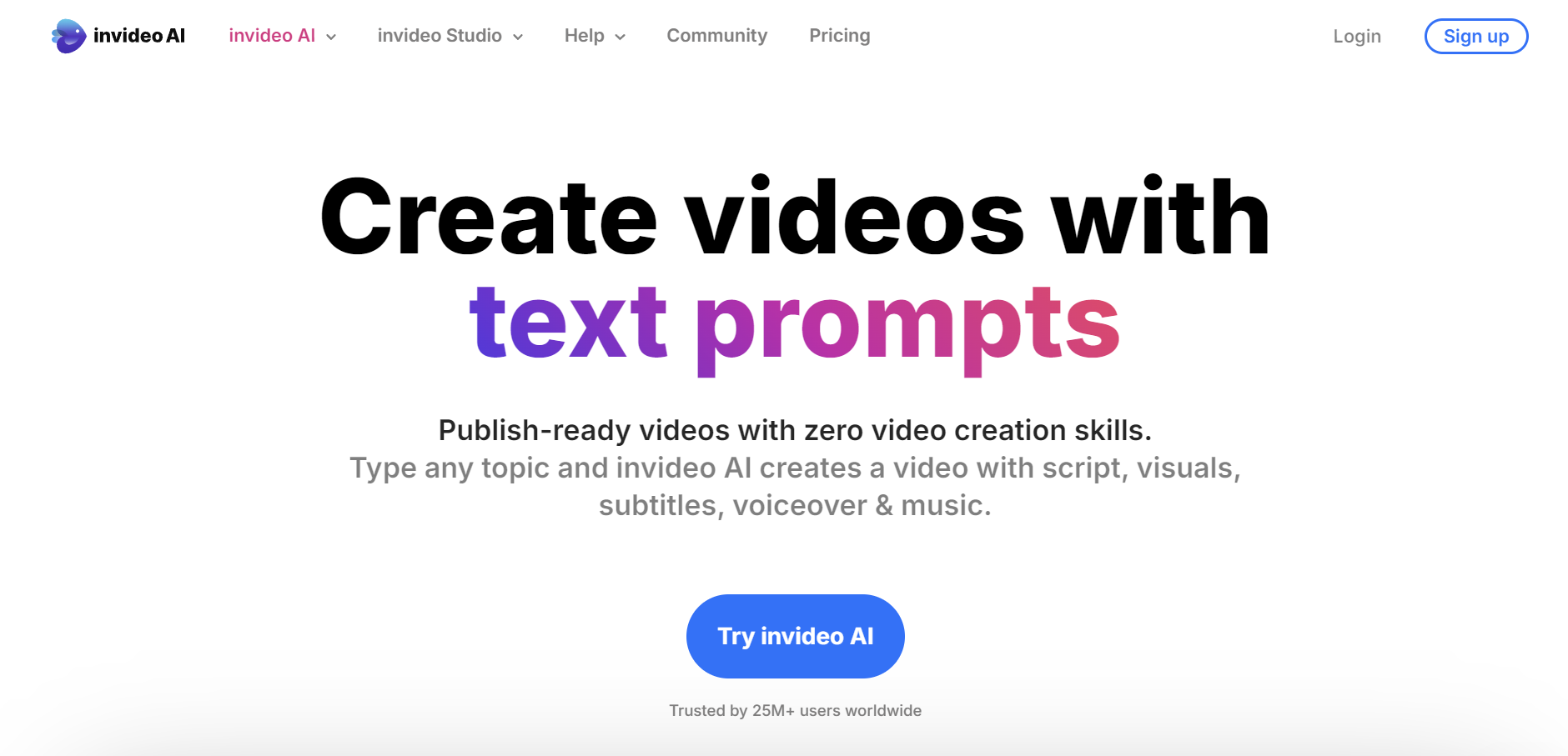
Even if you’re not a video pro, InVideo makes it easy to create eye-catching content. It’s an intuitive platform that uses AI to turn your ideas into professional-quality videos.
Whether you’re putting together a quick promo or a detailed tutorial, InVideo helps with everything from editing to adding text and effects, making video creation accessible to everyone.
You can create videos with just text prompts! Many small businesses use InVideo to create engaging social media ads that drive traffic without the need for expensive production teams.
Use for: Promotional videos, social media ads, video tutorials, text-to-video content, and product demos.
4. DeepAI
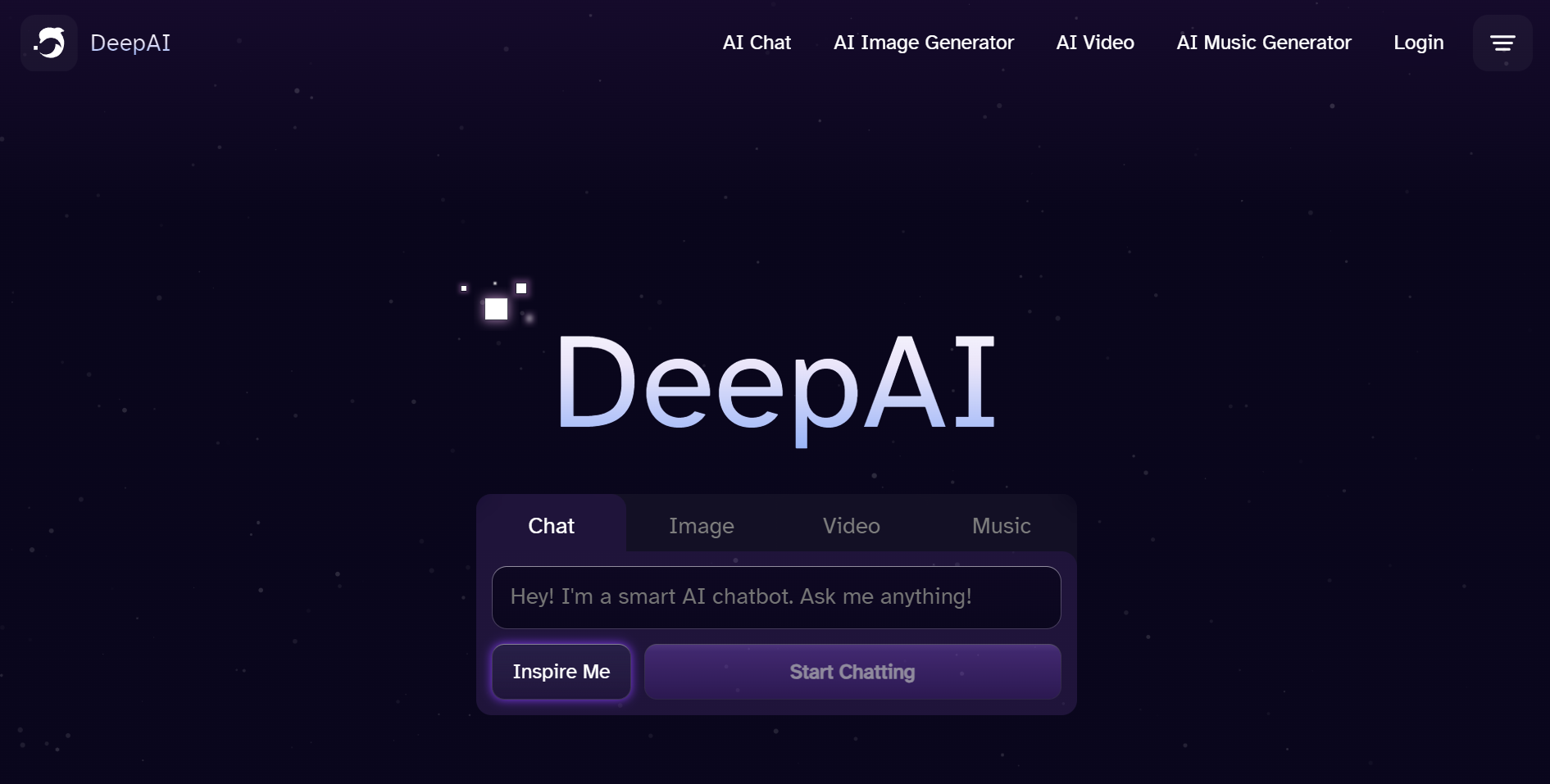
DeepAI is like a sandbox for creatives. Want to turn your thoughts into art or generate unique visual content? DeepAI offers a suite of tools that tap into advanced AI to create outputs as unique as your imagination. It’s ideal for artistic experiments, creative writing, and generating out-of-the-box visual content.
And it’s not just for artists—DeepAI can also be used to enhance existing content, like turning a simple sketch into a polished graphic or creating AI-generated images that complement written content, giving your projects a distinctive edge.
Use for: Eye-catchy carousels for socials, compelling infographics, banner images for blogs, newsletters, and so on.
5. CapCut
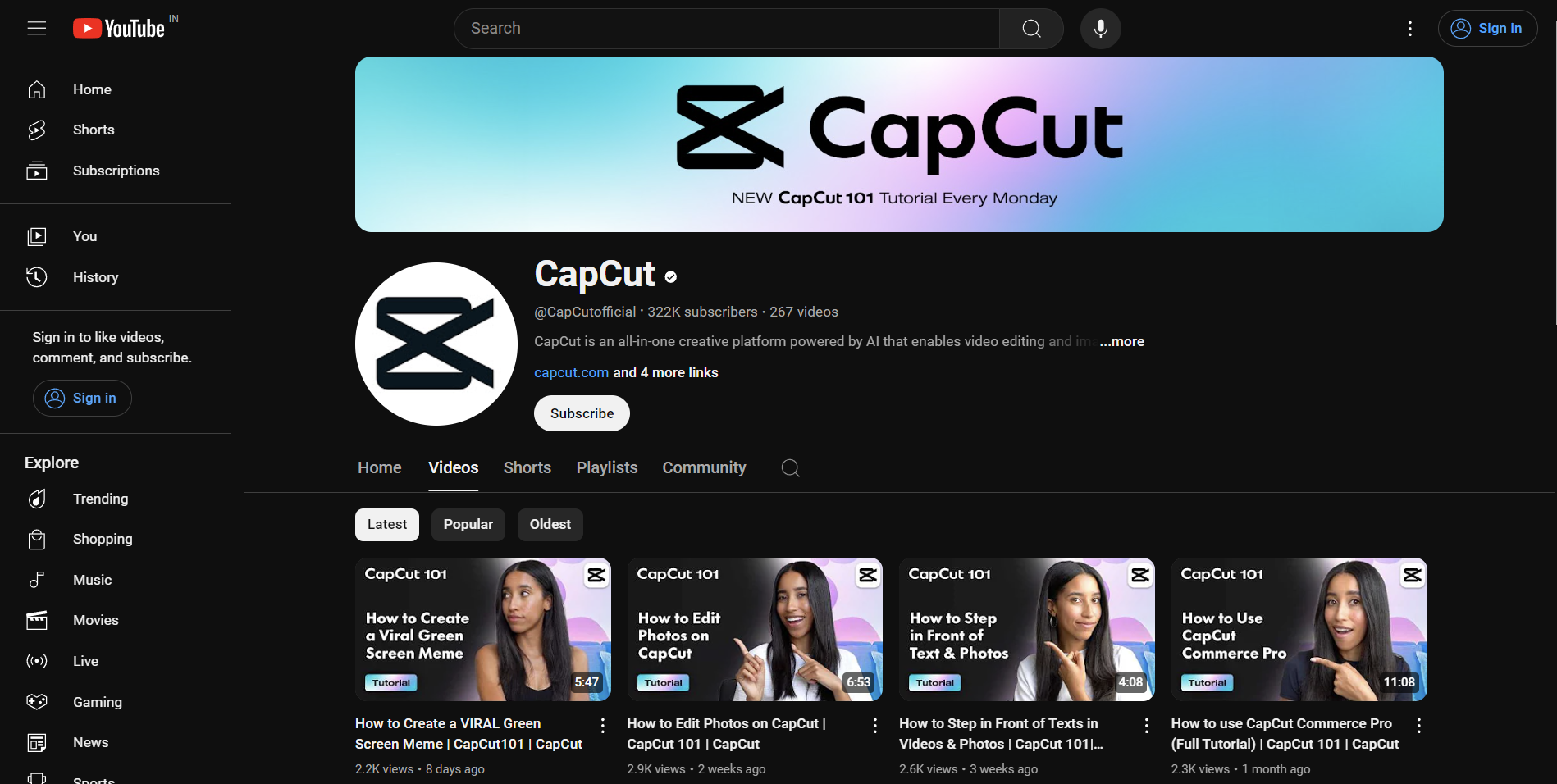
CapCut is incredibly popular with TikTok creators for its ease of use and powerful features. It’s not just about editing—it’s about creating content that can go viral. From adding trending effects to syncing music perfectly with your clips, CapCut is designed to help your videos stand out in a crowded feed.
From adding trending effects to syncing music perfectly with your clips, CapCut is designed to help your videos stand out in a crowded feed. As attention is the new currency, you can earn it through CapCut’s scroll-stopping videos.
Use for: YouTube Shorts, Instagram Reels, LinkedIn Videos, Podcasts, etc.
Stop struggling, start creating! Whether you’re writing, creating videos, or experimenting with new ideas, these AI tools make it easier and faster to produce high-quality content. They’re not just tools—they’re partners in your creative process. Why not give them a try and see how they can ignite your work?
3 Key insights from Our Content Marketing Strategy for Atlan
Here are three successful strategies we implemented to elevate Atlan’s content marketing:
- The power of featured snippets: By optimizing for featured snippets, we significantly increased Atlan’s organic traffic—4-5 times more than before—boosting visibility and engagement.
- Gains in keyword rankings: Our strategy led to a dramatic rise in keyword rankings, contributing to a surge in organic traffic and marketing qualified leads (MQLs).
- Enhanced online visibility: Our focus on featured snippets and refined SEO techniques improved Atlan’s visibility in search results, driving more traffic and engagement.
These results highlight the importance of optimizing for high-visibility positions to attract more visitors.
How can Revv Growth help you?
At RevvGrowth, we’re here to help B2B SaaS companies like yours stand out and grow. Here’s how we can make that happen:
1. Get more visibility
We’ll help you grab the spotlight in search results by optimizing your content for featured snippets and top positions. This means more visibility for your brand and more visitors heading to your site.
2. Drive more traffic
Our game plan is designed to ignite your organic traffic. By revamping your existing content and creating fresh, compelling pieces, we’ll boost your search rankings and attract a steady stream of new visitors.
3. Optimize your content strategy
We don’t just create content; we build strategies that resonate with your audience. Whether it’s refining what you already have or coming up with new ideas, we make sure your content grabs attention and engages the right people.
4. Show real results
We’re all about results you can see. We track what’s working, measure improvements, and keep you updated with clear reports. You’ll know exactly how our efforts are making a difference.
Want to learn what results we have rendered? Check this out to understand how we helped our beloved customers: Success Stories!
Wondering if we help you ignite your organic traffic, and attract more MQLs? Book a free discovery call to find out how we can help you!
Bottom line?
The key to a standout SaaS content marketing strategy lies in understanding your audience, delivering genuine value, and telling your brand’s story effectively. Consistency, diverse formats, and smart optimization ensure your content reaches and resonates with the right people. In a content-driven world, leveraging various channels and staying adaptable will keep you ahead of the competition.
How do you plan to elevate your content strategy? Whether refining your approach or starting anew, these principles will help you create content that attracts and converts. Let’s make your content unforgettable!
FAQs
1. What is SaaS content marketing?
– It involves creating and sharing valuable content tailored to audience needs, aiming to build trust and drive user acquisition.
2. What is an example of SaaS content marketing?
– Mailchimp produces diverse content, including blog posts and guides, to educate users and showcase expertise.
3. What types of content are most effective for SaaS marketing?
– A mix of educational and promotional content, such as blog posts, webinars, and product demos, works best.
4. How can I measure the ROI of my content marketing efforts?
– Track metrics like website traffic and lead generation to assess content impact and adjust strategies.
5. What strategies can I use to distribute and promote my content?
– Utilize a multi-channel approach, including social media, email marketing, and partnerships, to maximize reach.

